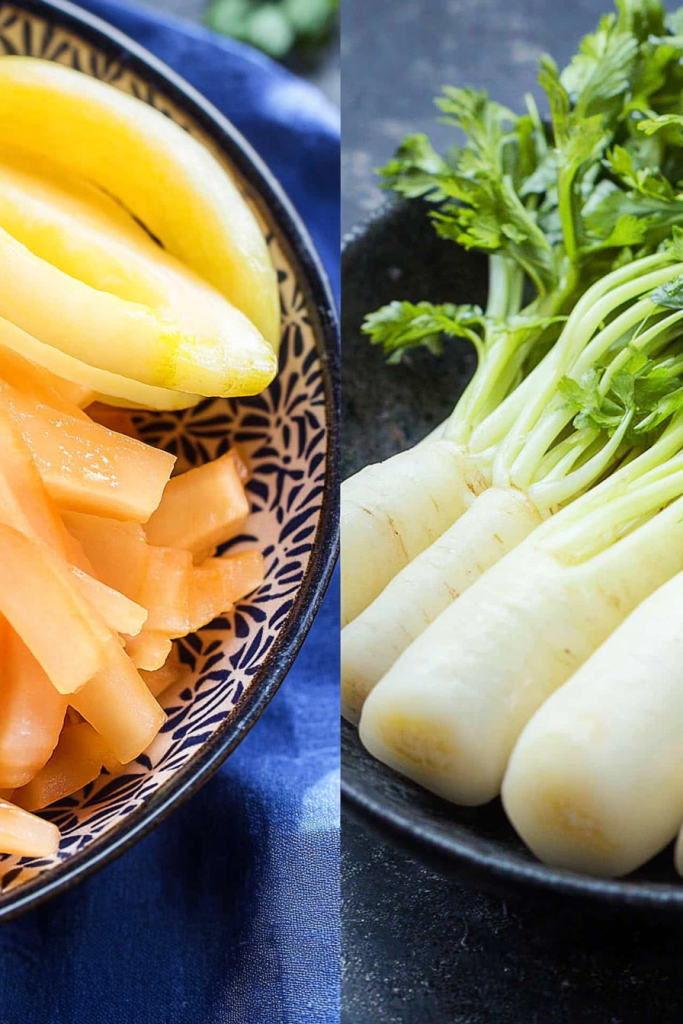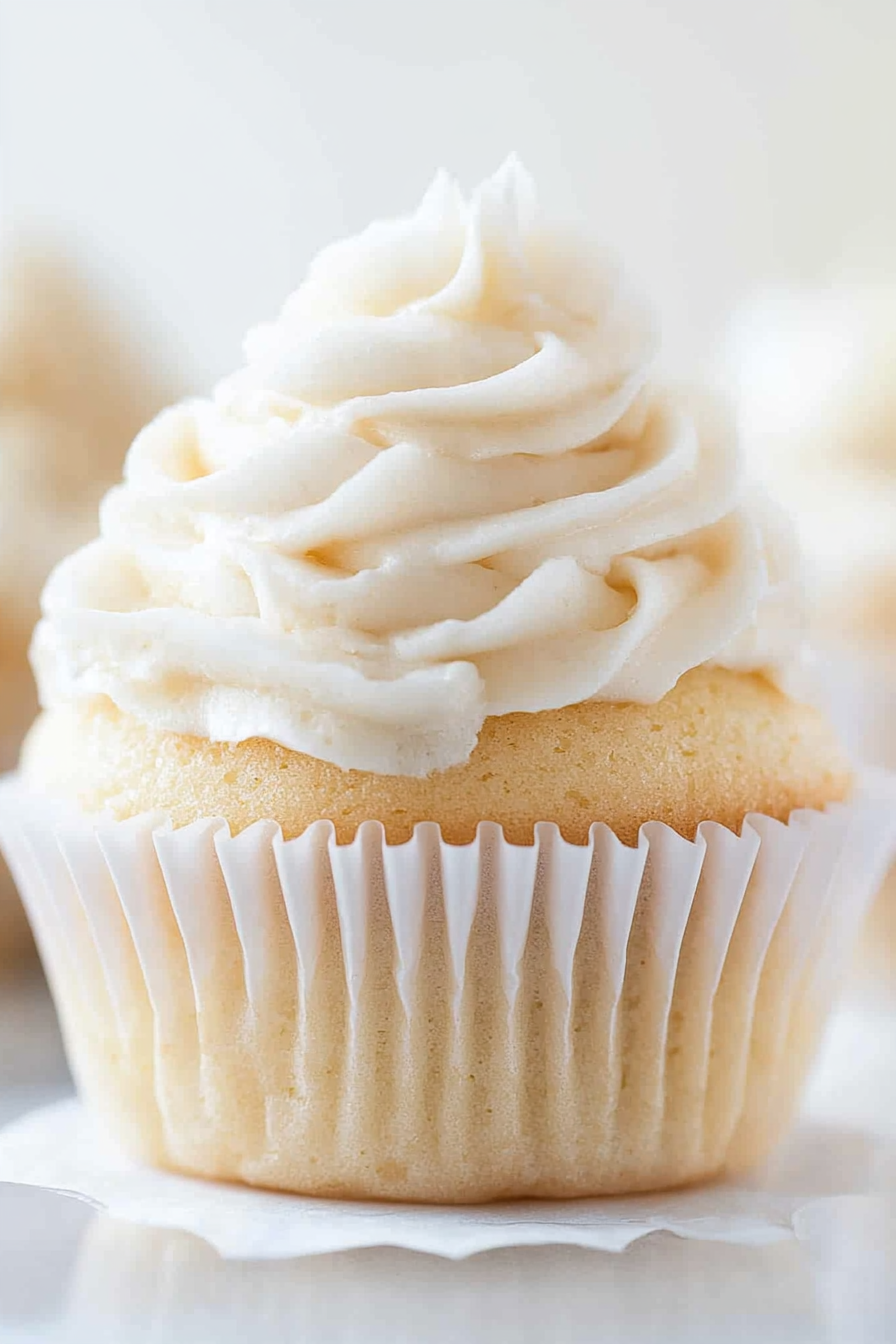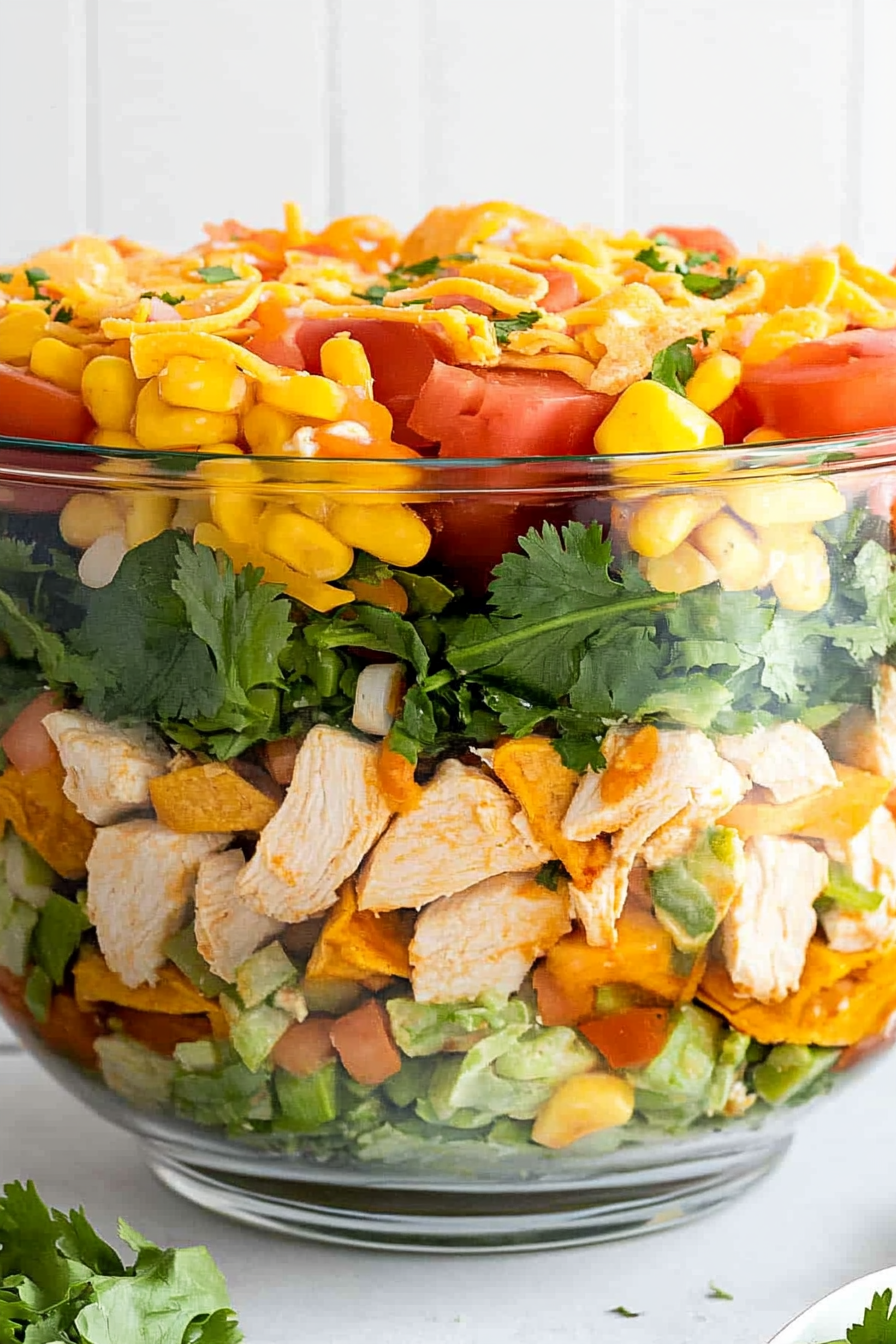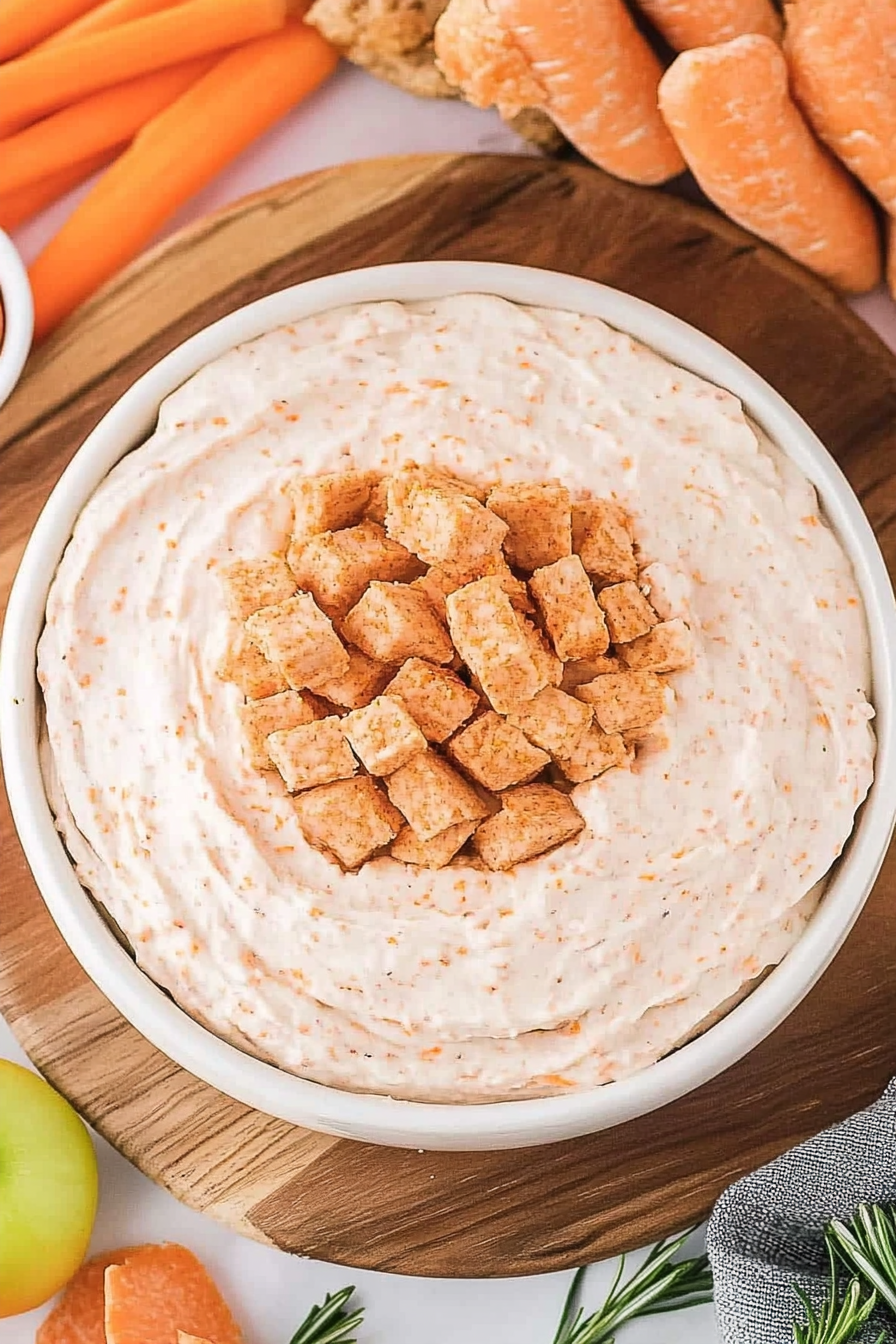Oh, where do I even begin with these little disks of pure joy? If you’ve ever stared at a giant daikon radish in the grocery store, wondering what on earth to do with it besides making pickled radishes (which, don’t get me wrong, are amazing too!), then pull up a chair, my friend. I have *the* daikon recipes for you. These aren’t just any daikon recipes; they’re my Grandma’s savory Korean radish pancakes, or “Moo Jeon” as we call them in my family. They’re a lifesaver on busy weeknights when you want something incredibly satisfying without spending hours in the kitchen. They remind me so much of my childhood, of grandma’s small, bustling kitchen, the aroma of sizzling batter filling the air, and the excited chatter of my cousins waiting for their turn to snag a warm pancake. Honestly, if you haven’t tried a good daikon pancake, it’s like discovering a whole new world of comfort food. It’s surprisingly simple, unbelievably delicious, and a fantastic way to use up that big, beautiful daikon radish you might have. Think of it as a more rustic, incredibly flavorful cousin to the zucchini fritter, but with a delightful, slightly peppery bite that just sings.
What Are Daikon Radish Pancakes (Moo Jeon)?
So, what exactly are these magical things? Moo Jeon are essentially savory Korean pancakes made with shredded daikon radish as the star ingredient. “Moo” means radish in Korean, and “Jeon” refers to a type of savory Korean pancake or fritter. Unlike some other jeon that might rely heavily on seafood or kimchi, this version is beautifully simple, letting the subtle sweetness and tender texture of the daikon shine through. The shredded radish is mixed with a light, crispy batter, and then pan-fried until golden brown and wonderfully tender on the inside. It’s a dish that feels both humble and incredibly special. My grandma used to make these whenever we’d visit, and they were always the first thing to disappear from the table. It’s a testament to how simple ingredients, when treated with love and a bit of technique, can create something truly extraordinary. It’s not a heavy meal, but it’s incredibly satisfying, kind of like a perfectly executed omelet or a delicate crepe, but with that savory, umami-rich Korean twist.
Why you’ll love this
There are so many reasons why this daikon recipe has become a staple in my kitchen, and I just know you’re going to fall in love with it too. First and foremost, the flavor is out of this world. The daikon itself becomes slightly sweet when cooked, and when combined with a savory batter and served with a tangy dipping sauce, it’s just a perfect harmony of tastes. It’s got this wonderful tender texture on the inside, with a satisfyingly crisp edge from the pan-frying. It’s a flavor profile that’s comforting yet exciting, familiar yet new. And then there’s the sheer simplicity of it all. I’ve made this countless times when I’m absolutely exhausted, and it never fails to come through. You can literally whip this up in under 30 minutes from start to finish, making it a lifesaver on busy nights. Forget complicated ingredients or techniques; this is honest, straightforward cooking at its finest. Plus, it’s incredibly budget-friendly! Daikon radishes are usually quite affordable, and the other pantry staples you’ll need are likely already in your kitchen. What I love most about this recipe, though, is its versatility. You can serve these for breakfast, lunch, a light dinner, or even as an appetizer. They’re fantastic on their own, or you can jazz them up with a little something extra. If you enjoy my other savory pancake recipes, like my kimchi jeon or zucchini fritters, I guarantee you’ll adore this one. It’s got that same comforting, delicious essence, but with a unique twist that makes it stand out.
How do you make Daikon Radish
Quick Overview
This recipe is all about simplicity and flavor. You’ll shred your daikon, mix it with a light, crispy batter, pan-fry until golden, and serve with a simple, zesty dipping sauce. It’s a straightforward process that yields incredibly delicious results. The key is to get that perfect balance of tender radish and crispy edges. It’s one of those recipes where the smell alone brings everyone to the kitchen, begging for a taste!
Ingredients
For the Main Batter:
You’ll need about 2 cups of shredded daikon radish. Look for a firm, heavy daikon for the best flavor and texture. You want one that feels dense and isn’t too soft. I usually grab one that’s about 12-15 inches long. For the batter, I use 1 cup of all-purpose flour, but you can also experiment with a gluten-free blend if needed. A pinch of salt is crucial for bringing out all those lovely flavors. And for that perfect crispiness, I add about 1/2 teaspoon of baking powder. Some people add a little egg, but I find it makes them a bit too cakey, so I tend to skip it, which also makes it naturally vegan-friendly! I also like to add about 1/4 teaspoon of freshly ground Black Pepper for a subtle kick.
For the Filling:
Honestly, the beauty of this recipe is its simplicity, so there isn’t really a separate “filling” in the traditional sense. The daikon *is* the filling! However, if you want to add a little something extra, I sometimes toss in some finely chopped green onions or chives right into the batter before frying. It adds a lovely pop of color and a fresh, oniony note. Some folks even add a tiny bit of minced garlic, but I usually save the garlic for the dipping sauce.
For the Glaze (Dipping Sauce):
This is where you get to play with your flavors! My go-to is a simple mix: 3 tablespoons of soy sauce (I prefer low-sodium), 1 tablespoon of rice vinegar for that essential tang, 1 teaspoon of sesame oil for a nutty aroma, and about 1/2 teaspoon of gochugaru (Korean chili flakes) for a gentle heat. You can adjust the chili flakes to your spice preference, or leave them out entirely if you’re sensitive to heat. A tiny pinch of sugar can balance out the saltiness and acidity, and some fresh, finely chopped scallions or a sprinkle of toasted sesame seeds are always a good idea for garnish. You can also add a little minced garlic here if you like!
Step-by-Step Instructions
Step 1: Preheat & Prep Pan
Alright, let’s get cooking! First things first, grab a large non-stick skillet or a cast-iron pan. You want something that heats evenly. Put it over medium-high heat. Add about 2 tablespoons of a neutral cooking oil, like vegetable, canola, or grapeseed oil. You want enough to coat the bottom of the pan generously; this is key for that beautiful golden crispiness. Let the oil get nice and hot while you prepare the batter – you’ll see it shimmer slightly when it’s ready.
Step 2: Mix Dry Ingredients
In a medium-sized bowl, whisk together the flour, salt, baking powder, and Black Pepper. Just a quick whisk to make sure everything is well combined. This ensures even distribution of the leavening agent (baking powder), which helps make the pancakes light and airy, not dense and heavy. Don’t overthink this step; a few seconds is all you need.
Step 3: Mix Wet Ingredients
Now, for the daikon! You’ll want to shred your daikon radish. The easiest way is using the large holes of a box grater or a food processor with a shredding attachment. You should have about 2 cups of shredded daikon. If you notice a lot of excess moisture, you can gently squeeze out some of it with your hands, but don’t go overboard – a little moisture is good. Add the shredded daikon directly into the bowl with your dry ingredients. If you’re adding green onions or chives, chop them finely and add them now too.
Step 4: Combine
Pour about 1/2 cup of cold water into the bowl with the daikon and flour mixture. Gently stir everything together with a spatula or wooden spoon until just combined. You don’t want to overmix! The batter should be thick but still pourable, with a consistency slightly thicker than pancake batter. It’s okay if there are a few lumps; overmixing will develop the gluten and make your pancakes tough. The goal here is a tender crumb. If it seems too dry, add another tablespoon or two of water, a little at a time, until you reach that perfect consistency.
Step 5: Prepare Filling
As I mentioned, the daikon is the star here! For this particular recipe, we aren’t making a separate filling. If you want to add those green onions or chives, chop them finely and toss them into the batter mixture. Some people like to add a little bit of minced kimchi for a spicier, tangier pancake, but I usually keep this one more classic daikon. The goal is to let the radish flavor really shine through.
Step 6: Layer & Swirl
This isn’t really a “layer and swirl” kind of recipe in the way you might think of a marble cake. Instead, you’ll be spooning dollops of the batter into the hot, oiled pan. You want to spread each dollop out slightly with your spatula to form a pancake about 4-5 inches in diameter and about 1/2 inch thick. Don’t overcrowd the pan; cook in batches to ensure even browning. You’re aiming for a beautiful, rustic shape.
Step 7: Bake
Cook the pancakes for about 3-4 minutes per side, or until they are golden brown and crispy on the outside, and the daikon is tender when pierced with a fork. Adjust the heat as needed; if they’re browning too quickly, lower the heat slightly. If they’re not getting crispy enough, you might need to bump it up a notch. Flip them carefully with a spatula. You should hear a gentle sizzle as they cook – that’s the sound of deliciousness happening!
Step 8: Cool & Glaze
Once the pancakes are perfectly golden on both sides, remove them from the pan and place them on a wire rack set over a baking sheet. This prevents them from getting soggy and keeps them nice and crisp. While the pancakes are still warm, whisk together all the ingredients for your dipping sauce in a small bowl. I like to serve the sauce on the side so everyone can dip to their heart’s content. You can also drizzle a little bit over the top just before serving if you prefer.
Step 9: Slice & Serve
These are best served immediately, hot off the skillet! You can cut them into wedges or serve them whole. The aroma is incredible! They are perfect on their own, but don’t forget that delicious dipping sauce. That tangy, slightly spicy sauce cuts through the richness of the pancake beautifully. It’s the perfect finish. Trust me, these will disappear in minutes at my house!
What to Serve It With
The wonderful thing about these daikon radish pancakes is their versatility. They fit into any mealtime with ease! For breakfast, I love serving them with a simple fried egg on top. The runny yolk mixes with the crispy pancake and dipping sauce – pure heaven. A side of kimchi or some Quick Pickled cucumbers is also fantastic. For a more leisurely brunch, I’ll often arrange them on a platter with some fresh fruit, maybe some grilled halloumi, and a lovely pot of green tea. They look so elegant and inviting! When I’m craving something sweet but don’t want to bake a whole cake, these can actually work as a savory dessert when paired with a slightly sweeter dipping sauce (think a touch more sugar, maybe a hint of honey) or even a dollop of plain Greek yogurt. But my absolute favorite way to serve them is as a light dinner or a substantial snack. They are perfect alongside a simple miso soup and a small green salad for a complete, satisfying meal. My kids actually ask for these all the time when they’re hungry between meals. They’re just so satisfying and addictive!
Top Tips for Perfecting Your Daikon Recipe
Over the years of making these daikon radish pancakes, I’ve picked up a few tricks that really elevate them from good to absolutely spectacular. Here are my top tips to help you nail them every single time. First, regarding the daikon itself: make sure you use fresh daikon. It should feel firm and heavy for its size. If it feels soft or rubbery, it’s probably past its prime. When you shred it, don’t be afraid to squeeze out a *little* bit of excess water, but don’t wring it out completely dry. You need some moisture for the batter to bind properly. If you squeeze out too much, your batter might be too dry, and the pancakes won’t be as tender. For mixing, this is crucial: do NOT overmix the batter. Mix it just until the flour is incorporated into the daikon and water. Overmixing develops gluten, leading to tough, chewy pancakes instead of light, tender ones. A few lumps are perfectly fine, even preferable! When it comes to frying, use enough oil and make sure your pan is properly heated. Medium-high heat is your friend here. You want the oil hot enough to create that beautiful crispy exterior quickly, without overcooking the inside. Don’t overcrowd the pan; give each pancake space to cook evenly. If you try to cram too many in, they’ll steam instead of fry, and you won’t get that lovely crunch. For variations, I’ve experimented quite a bit! If you like a little more texture, you can add some finely chopped shiitake mushrooms to the batter. For a vegan version, just ensure you’re using a plant-based oil and no egg in the batter. I’ve even tried a gluten-free version using a blend of rice flour and tapioca starch, and it turned out surprisingly well, though it needed a touch more water. The key is to find that perfect consistency – thick enough to hold together, but not so thick it becomes doughy. And for the dipping sauce, don’t be afraid to play with it! My basic recipe is a starting point. Add a tiny bit of minced garlic for extra zing, or some finely chopped cilantro for a fresh herbal note. You can also use tamari instead of soy sauce for a gluten-free option.
Storing and Reheating Tips
This is the part where you might wonder if they hold up, and I’m happy to report they do, with a few caveats! If you have any leftover daikon radish pancakes (which is rare in my house!), they are best stored at room temperature for a few hours if you plan to eat them soon. They tend to stay crispest when fresh. For longer storage, pop them into an airtight container in the refrigerator. They’ll keep well for about 2-3 days. Honestly, they’re still quite good reheated. To reheat, I highly recommend using a skillet over medium heat with a tiny bit of oil. This will help bring back some of that delightful crispiness that can get a little lost in the fridge. You can also use a toaster oven or an air fryer set to a moderate temperature (around 300-350°F or 150-175°C) for a few minutes until heated through and slightly crispy again. Microwaving isn’t ideal, as it tends to make them a bit soft and rubbery, but if that’s your only option, just heat in short bursts until warm. For the glaze, it’s best to store it separately in a small container in the fridge. It will keep for about a week. Just give it a quick whisk before serving if it separates. I never recommend freezing these pancakes, as the texture just doesn’t hold up well after thawing. The best way to enjoy them is definitely fresh!
Frequently Asked Questions
Final Thoughts
There you have it – my beloved daikon radish pancakes! This recipe is more than just a dish for me; it’s a connection to my family, to my grandma, and to those warm, comforting kitchen memories. I truly hope you’ll give these Moo Jeon a try. They’re a delightful departure from your usual fare, offering a unique texture and flavor that’s surprisingly easy to achieve. Whether you’re looking for a simple weekday meal, a unique appetizer, or just a way to use up that gorgeous daikon in your fridge, this recipe has got you covered. It’s a testament to how simple, humble ingredients can be transformed into something truly spectacular with just a little bit of love and a few key techniques. If you enjoy exploring Korean flavors or are simply looking for a delicious new savory pancake recipe, I can’t recommend these enough. They’re proof that sometimes, the most memorable meals come from the simplest ideas. I can’t wait to hear how yours turn out! Please, leave a comment below and let me know your thoughts, or share any of your own family twists on this classic. Happy cooking, and happy eating!

Daikon Radish Stir-Fry
Ingredients
Main Ingredients
- 1 pound Daikon radish Peeled and thinly sliced
- 0.5 cup Carrots Matchstick cut
- 0.25 cup Soy sauce
- 1 tablespoon Sesame oil
- 1 tablespoon Ginger Grated
- 2 cloves Garlic Minced
- 1 tablespoon Cornstarch
- 0.25 cup Water
- 1 tablespoon Vegetable oil
- Sesame seeds For garnish
Instructions
Preparation Steps
- In a small bowl, whisk together soy sauce, cornstarch, and water. Set aside.
- Heat vegetable oil in a large skillet or wok over medium-high heat.
- Add ginger and garlic; stir-fry for 30 seconds until fragrant.
- Add daikon radish and carrots; stir-fry for 5 minutes, or until slightly softened.
- Pour the soy sauce mixture into the skillet and cook, stirring constantly, until the sauce thickens.
- Stir in sesame oil and sesame seeds. Serve immediately.












